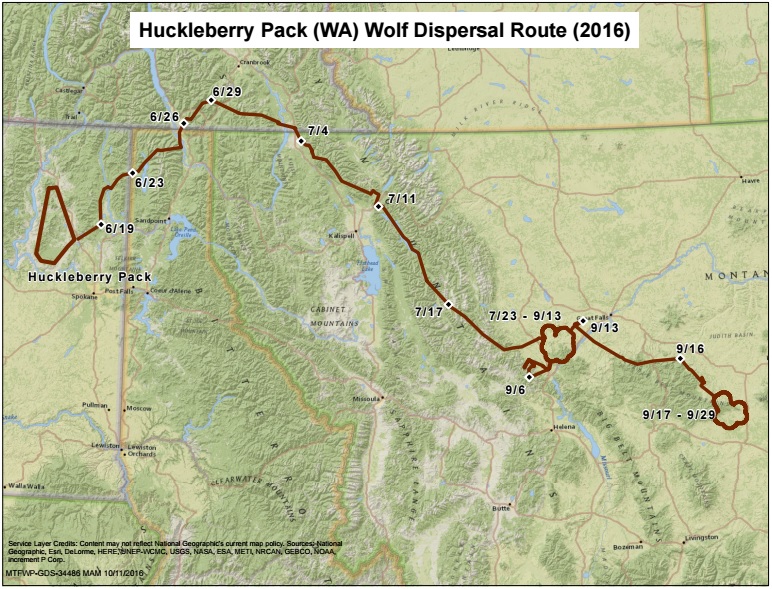A wolf shot in September while killing sheep near Judith Gap in central Montana spent the previous three months traveling about 700 miles, starting in western Washington.
When federal Wildlife Services killed the 2-year-old male on Sept. 29, it was wearing a collar that had been placed on the animal in February by Washington Fish and Wildlife biologists north of Spokane.
“Dispersal is a necessary and a very risky component of wolf population dynamics,” said Ty Smucker, Fish, Wildlife and Parks wolf specialist.
This wolf left its pack in June, turning east into Idaho, then north in Canada. It re-entered the United States on July 4 near Eureka, Mont., heading southeast, Smucker said.
“By late July it was on the Rocky Mountain Front and Washington Fish and Wildlife called to let me know,” Smucker said.
Smucker was notified of the animal’s location about once a week.
“The wolf came out on the Rocky Mountain Front just east of Bean Lake on July 22,” Smucker said. “Then it spent over a month and a half moving around the lower Dearborn River Country, before heading toward Square Butte west of Great Falls on Sept. 13.”
From Square Butte, the wolf turned east, keeping to the north side of the Little Belt Mountains, emerging on the foothills of the Little Belts west of Judith Gap on Sept. 22, Smucker said.
Responding to a report of a wolf killing sheep, federal Wildlife Services killed the collared wolf Sept. 29 as it was leaving a band of sheep that it had been chasing and feeding on.
“It had to travel at least 700 miles total,” Smucker said.
The young wolf was probably looking for a mate, Smucker said.
“Wolf packs consist of breeding pairs that generally produce 4-6 pups each spring,” he said. “As young wolves mature they typically disperse from their natal pack in search of potential mates and vacant territories in which to start their own packs.”
Sometimes that search can take the animal on a long journey. In 2015, a wolf left its pack’s territory west of Missoula and ended up 600 miles north in British Columbia.
While FWP occasionally receives reports of wolves in the Little Belt Mountains of central Montana, there are currently no known packs of wolves maintaining territories or producing pups in the area, Smucker said.
In addition, FWP does not capture and relocate problem wolves, he said.
Montana’s wolf population has stabilized for the past eight years at a minimum of more than 500.
“Public hunting and trapping of wolves helps manage wolf numbers in Montana,” Smucker said. “Overall, Montana’s wolf population appears to be doing quite well.”
